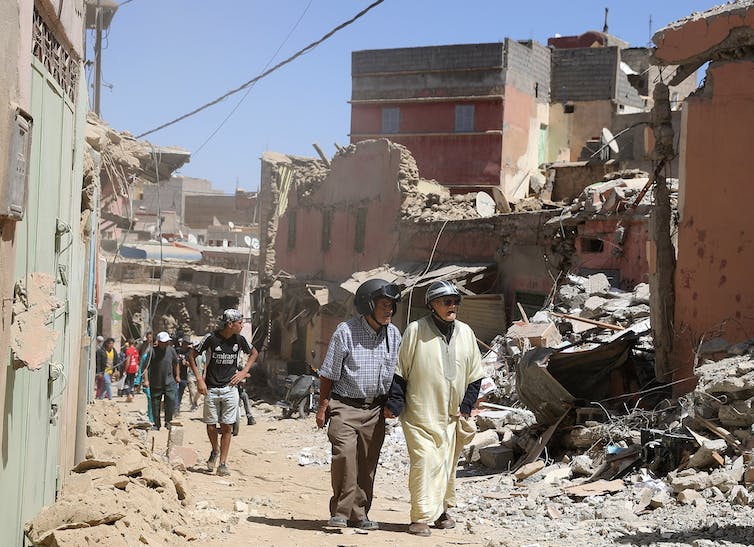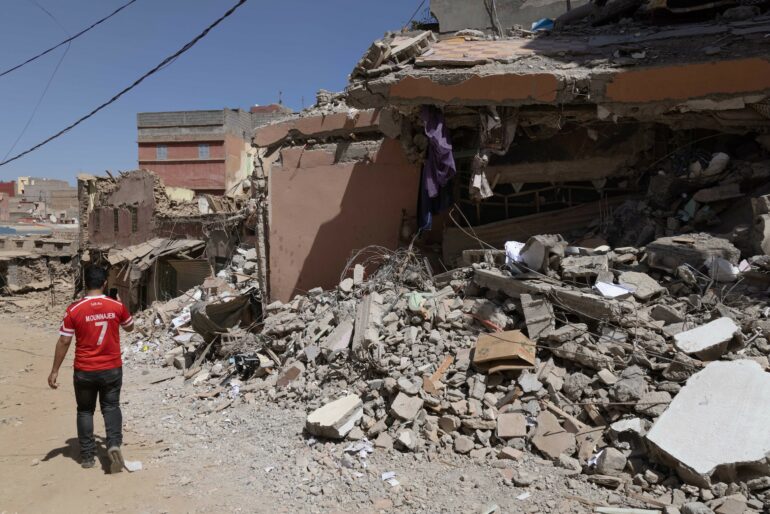Disasters can happen anywhere.
Some places are more prone to hazards such as earthquakes, flooding and hurricanes, but there’s nowhere where the risk is zero. The good news is that humans can make good decisions to lower the odds of such hazards turning into disasters. Technology can help determine where to make investments to save the most lives.
The terrible devastation caused by a 6.8 magnitude earthquake in Morocco on Sept. 8, 2023, is the result of the presence of centuries-old historic buildings and the continued use of old construction methods such as clay bricks and unreinforced masonry. These building materials are prevalent worldwide, particularly in developing countries.
Engineers like me tend to focus on tangible decisions related to how buildings are constructed – for example, the amount and location of steel reinforcement. Over the last several decades, I’ve conducted the world’s largest shake table tests, placing a full-size apartment building on a platform that simulates seismic activity, and I’ve led teams of experts to investigate earthquakes, hurricanes, tornadoes and floods – but I’ve never become used to devastation like we are seeing in Morocco now.
As we are reminded by each disaster, mitigation is needed to make our homes, offices and schools safer and more resilient to earthquakes. Retrofitting buildings is expensive – and that cost represents a daunting challenge for developing nations like Morocco and Syria, as well as developed nations like Turkey – all three of which were devastated recently by major earthquakes.
And yet, I am optimistic because I know thousands of engineers around the world are working and collaborating to make earthquakes less deadly.

The Morocco earthquake damaged thousands of homes and buildings, including many of the country’s long-standing historical landmarks.
Wang Dongzhen/Xinhua News Agency via Getty Images
How earthquakes devastate buildings
Before we can discuss how to make people safer in earthquakes, it helps to understand the forces at work during these destructive events.
The extent of the damage done by an earthquake is determined by several factors, including magnitude – or how much energy the earthquake releases from the fault – depth of the fault and how far the building is from the epicenter of the quake.
An epicenter is the location on the surface of the Earth above the fault. Essentially, it is ground zero for the quake, where shaking is most intense and buildings are more likely to collapse.
If the columns and walls of a multi-story building are not stiff and strong enough to resist the forces of an earthquake, gravity takes over. The building usually collapses at the bottom floor level, causing the stories above to follow. Anyone inside can be trapped or crushed by falling debris. Stopping this requires modern design codes, significant investment and enforcement of those design codes. There…



